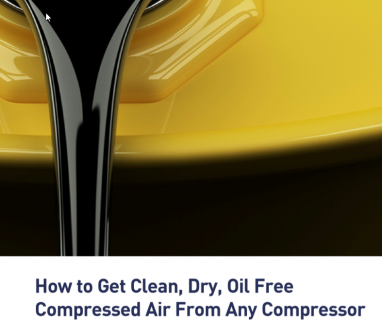- Process - Food & Beverage / Pharmaceutic
- Industrial - Compressed Air & Gas Treatment
- Adsorption Technology
- Breathing Air
- Filtration & Separation
- Gas Generators
- Filter tauschen - Kosten senken!
- Condensate Technology
- Cooling & Refrigeration
- New Products
- Promotions

news about pure!
How to Get Clean, Dry, Oil Free Compressed Air From Any Compressor
A White Paper By Mark White - Compressed Air Treatment Applications Manager
In today’s modern production facilities, the use of compressed air is often pivotal to manufacturing processes. Irrespective of whether the compressed air comes into direct contact with the product or is used to automate a process, provide motive power, package products, or even to generate other gases on-site, a clean, dry, reliable compressed air supply is essential to maintain efficient and cost effective production.
There are many different types of air compressor available today, and due to its efficiency and reliability, the rotary screw compressor has firmly established itself as the technology of choice for many industries and applications.
Choosing a rotary screw compressor can be a daunting task due to the number of manufacturers and the many variants they provide. One of the biggest decisions to make when selecting a screw compressor is whether to select an oil lubricated or oil-free model.
Marketing messages are often aimed specifically at industries such as food, beverage, pharmaceutical, and electronics and play on the fear that oil is the biggest contamination threat they face from compressed air.
Unfortunately in the pursuit of oil free compressed air, the downstream air treatment system is often neglected or overlooked completely. For this reason, many users are disappointed to find that oil contamination and water are still present after the installation of their new compressor.
This paper has been developed to provide the reader with an understanding of where oil and other contaminants originate in a compressed air system and how to achieve clean, dry, oilfree compressed air for critical applications.
There are many different types of air compressor available today, and due to its efficiency and reliability, the rotary screw compressor has firmly established itself as the technology of choice for many industries and applications.
Choosing a rotary screw compressor can be a daunting task due to the number of manufacturers and the many variants they provide. One of the biggest decisions to make when selecting a screw compressor is whether to select an oil lubricated or oil-free model.
Marketing messages are often aimed specifically at industries such as food, beverage, pharmaceutical, and electronics and play on the fear that oil is the biggest contamination threat they face from compressed air.
Unfortunately in the pursuit of oil free compressed air, the downstream air treatment system is often neglected or overlooked completely. For this reason, many users are disappointed to find that oil contamination and water are still present after the installation of their new compressor.
This paper has been developed to provide the reader with an understanding of where oil and other contaminants originate in a compressed air system and how to achieve clean, dry, oilfree compressed air for critical applications.


